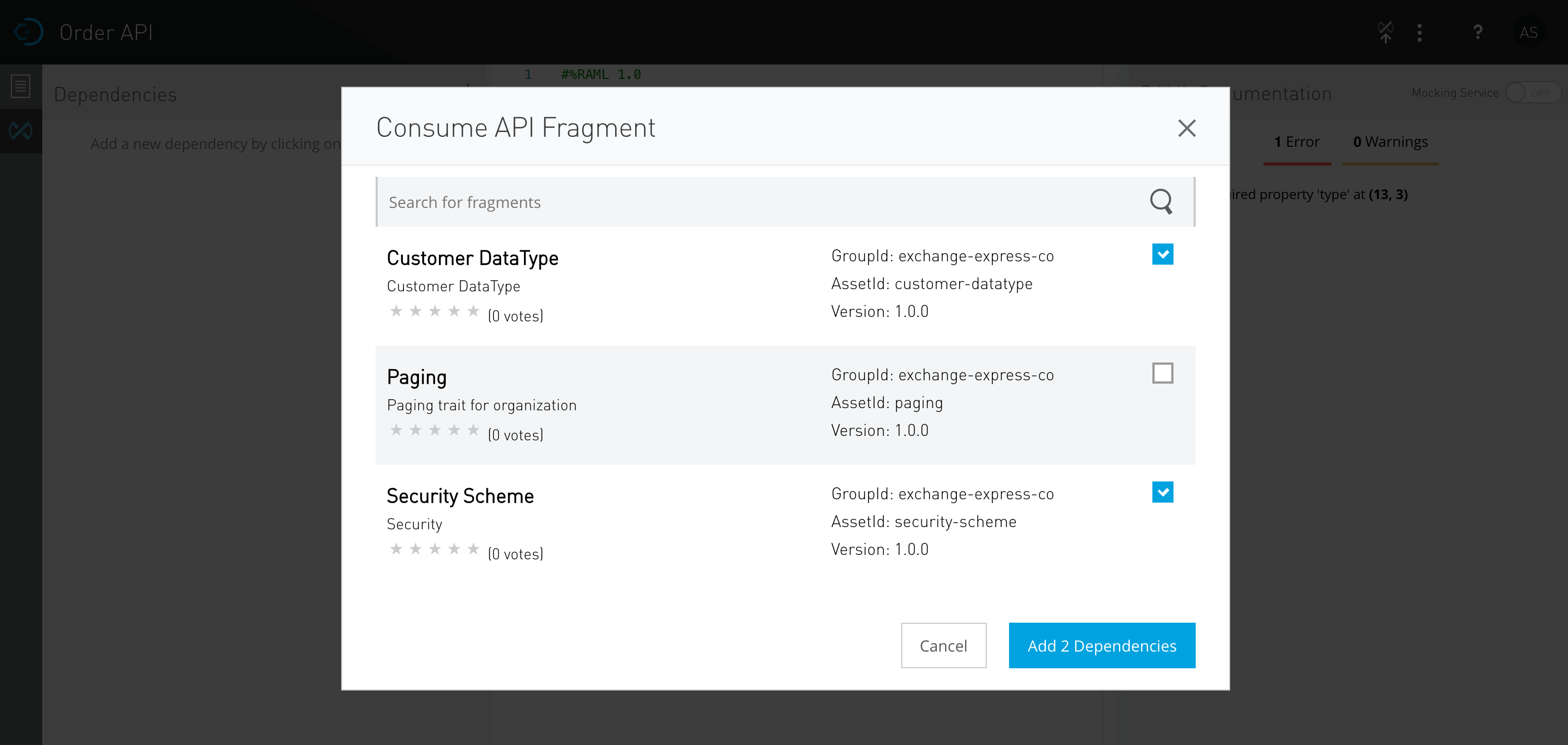MuleSoft ‘Crowd’ Looks To Remove API Speed Bumps; Spur More API Reuse, Collaboration and Fluidity
As APIs have become more critical to enterprise efforts to reshape IT and enable digital transformation, MuleSoft execs say it’s time to remove the speed bumps that can impede API adoption and innovation. IDN talks with MuleSoft’s Ahyoung An about Crowd, the latest edition of company’s API-led connectivity platform.
by Vance McCarthy
Tags: Anypoint, API, IDE, integration, MuleSoft, reuse, self-service, transformation,

sr product marketing
manager

"At MuleSoft, we have been talking about building an application network and doing it with an API-led mindset. Crowd is the next step to delivering on that."
As APIs have become more and more critical to enterprise efforts to reshape IT and enable digital transformation, MuleSoft execs say it’s time to remove some of the speed bumps that can impede API adoption and innovation.
MuleSoft has released the latest upgrade to its Anypoint Platform, called Crowd, which sports a wide range of features to make APIs easier to create, save, discover, reuse, share and integrate with. The first major update to its API-led connectivity platform since the company went IPO in March.
At the heart of MuleSoft’s Crowd release are capabilities to promote more “collaboration” and “crowdsourcing,” senior product marketing manager Ahyoung An told IDN. Making both of these easier for API stakeholders will do a lot to and promote more ‘fluidity’ for API projects – and as a result smooth out obstacles to API success, she added
To smooth out pesky API speed bumps, Crowd employs three (3) key strategies:
- Easily allow central IT to enable downstream API-led innovation – by freeing up departmental IT, individual developers, and even LOB users.
- Simplify API creation, discovery and collaboration by downstream users – thanks to rapid, easy and platform-native access to API assets.
- Promote rich, customizable self-service – all while staying within parameters of API policies and security needs. This includes those pesky long-tail use cases of APIs, allowing individual users to customize API fragments to meet their individual project needs and simplify multi-API integration.
Integration & Web APIs
 Enterprise-Grade Integration Across Cloud and On-Premise
Enterprise-Grade Integration Across Cloud and On-Premise
These strategies, designed to work in consort with each other, also deliver on that tough-to-achieve balance between what end users’ and central IT needs. Users want more ease of use, rapid access and less hassle when looking to innovate with APIs. Central IT often requires control, visibility and management. Crowd’s approach looks to satisfy both groups at the same time, An added.
MuleSoft’s chief product officer Mark Dao described this balance this way: “With Crowd, central IT and product teams have a unified way to bring people, process and technology together to build an application network without losing governance and control. Different teams can collaborate on building APIs and integration while driving toward a common outcome on a shared platform.”
API Agility, Fluidity Leads to Realization of an API-driven Application Network
“At MuleSoft, we have been talking about building an application network and doing it with an API-led mindset,” An told IDN. “Crowd is the next step to [deliver that vision of] the application network,” she added.
MuleSoft defines “application networks” as “seamless frameworks of applications, data sources, and devices connected by APIs,” whether on-premises or in the cloud. When APIs and API fragments work together in an application network, they speed up app launch and app update cycles, making it easier to secure and manage access, and ultimately enable companies to do more — and faster — with less, she added.
“We’re hearing from customers that [the industry] needs to do more to enable fluidity, collaboration and ease of use for the larger API community of central IT, developers and others,” An said.
Crowd’s multi-prong approach comes as today’s demands to untether API creativity for digital innovation are out-of-orbit. As An put it:
“The explosion of mobile, big data, SaaS, PaaS and IoT (internet of things) is creating spiraling levels of integration work and complexity. In addition, integration specialists, application developers and LOBs across the enterprise are increasingly doing their own integration on an ad hoc basis.
As a result, applications, data and devices are inconsistently accessed, integrated and managed, and are hampering business agility and introducing governance and security risks. To reduce these risks, central IT will need to provide proper enablement and collaboration to empower these broader IT teams to deliver their own integration projects.”
Inside MuleSoft’s Crowd – Latest Update for Devs, IT to Anypoint Platform
Crowd’s key innovations include a new Anypoint Design Center , which brings together new and existing MuleSoft’s API and integration products designed to make discovery, promotion, consumption and integration of APIs, fragments and even Best Practice templates easier and more natural for end users, An said.
Further, MuleSoft is redesigning the Anypoint Exchange that houses key API-related resources (including connectors, templates, Best Practices, samples, and more). Providing users more native access to Anypoint Exchange resources directly from the tools, MuleSoft execs aim to promote reuse and spur collaboration, An explained.
By more tightly bringing together the tools in the Anypoint Design Center with the Anypoint Exchange repository, MuleSoft is “taking the app store analogy one step further,” she said. “Imagine if the tooling for designing and compiling those applications were integral to the environment as well,” An added. This is the picture of API fluidity.
“Previous [Anypoint Platform] releases have made it easier to build APIs for consumption, but we’ve learned from customers that API reuse doesn’t necessarily happen unless it is native within the platform.” An said. Thus, moving the tools and assets closer together (APIs, fragments and Best Practices) – and presenting a more ‘native’ feel, was the main focus of the new release, she added.
In specific, with Crowd users can natively surface API resources right from their tools (without the need to go outside it) to save work or discover and locate any asset, An said. “Reusable assets are embedded into every step of the design experience, making reuse a natural choice rather than merely an option users have,” she added.
Users can save API fragments (e.g., libraries, security schemes and data models) from within API Designer into Anypoint Exchange for discovery and reuse. In turn, these API fragments can be used for building any API spec, ensuring consistent, secure API design across the enterprise. Users can also promote APIs across different environments for seamless CI/CD automation.
Two new tools in MuleSoft’s Anypoint Design Center are:

- A new vesion of API designer - A graphical syntax-aware platform to design and document APIs using RAML (RESTful API Modeling Language). Users can share the API design, test it using API mocks and create interactive examples.
- Flow designer – A web-based designer for integration flows to help users compose flows by following best practices. Each step is ‘guided’, with suggestions based on actions by the user.
- Anypoint Studio – A unified graphical IDE with an easy on-ramp for cloud and on-premises connectivity and API development.
- Anypoint Connector DevKit (SDK) - For building reusable connectors for any system. It is fully integrated with Anypoint Studio, so developed assets can be packaged, installed and reused.
An shared some details on how MuleSoft’s efforts to give users a more native design experience will lead to more collaboration, reuse, (and hopefully more fun and profits) with APIs. She highlighted examples with API designer and flow designer.
“Users can do that natively now in API designer, saving their work with a simple click,” An said. The result: developers have simple, click-based local access to all their work product. They also have simpler access to APIs and API fragments created by others. “This all makes it much easier to locate and use them,” she added.
To further promote reuse, Crowd’s “dependency-mapping” capabilities take a lot of the guess work out of the issue ‘what happens if I touch or use this API?’ “Crowd will show interdependencies between APIs. This allows API designers and consumers to view correlations and other relationships between multiple APIs and fragments. “This visibility promotes more [API] reuse and collaboration, because as you make changes to one you’ll see impact on others,” An added.
The web-based flow designer aims to make integrations between APIs (and API fragments) much easier. “Flow designer was created with the mindset of the self-service integration. It takes users through integration step-by-step to clearly show what they can do next,” An said. Further, as users move through flow designer, the reusable assets saved by others are viewable right from the interface – without the need to leave and go to stand-alone API library or repository.
Flow designer also works with DataSense, a long-time Anypoint feature designed to speed up integrating home-grown APIs with those public APIs used by cloud-based SaaS systems.
Even though many SaaS providers have opened their APIs, each SaaS often supports different data types and structures. This means to complete an API integration, users need to do more than just tie API A to API B – they also often need to complete data mapping tasks, which can be time-consuming or technically challenging.
Thanks to flow designer and DataSense working together, users can avoid these manual tasks. Under the covers, Crowd will intelligently examine the structure of the input or output data that needs to be mapped, and then feeds the correct input or output values. Users won’t need to figure out any data structures manually. Crowd also has an easy way to let users visualize this information, and will even conduct automated connection testing and metadata retrieval to deliver a high level of certainty that flows will run without errors.
Crowd also offers easier ways for developers to “add color” and information with a markdown editor and WYSIWYG editor within Anypoint Exhange.
Other Crowd features worth mentioning:
- Ratings and reviews: Any user can comment or reply to a comment on any asset within the Exchange to ask questions, offer suggestions, provide feedback and more.
- Quick view of dependencies:Every reusable asset has a portal. Within an asset portal, users can view the full list of other assets that have dependencies on it, providing visibility and insight into potential impact from changes to the asset.
- New UI: Users will benefit from improved search capabilities, enhanced manual asset publication flow and support for the Open API Specification asset portal. (In parallel with the release of Crowd, MuleSoft announced it has joined the Open API Initiative under the Linux Foundation.
- Nod to Central IT - For all the flexibility and access Crowd brings the API developer, those in central IT will still retain the overall control and visibility they often need. “We want central IT to be involved and actively participate in APIs, and we do believe that governance and oversight is important, but we took an approach where governance is not heavy, but will help promote reuse,” An said.
Readers can test put Crowd by signing up for a free trial of Anypoint platform at https://www.mulesoft.com/platform/enterprise-integration
Related:
- Tray Advantage Program To Speed, Simplify AI-Powered Automation for Enterprises
- Removing Barriers to Business by Enabling Agility & Control with Ecosystem Integration
- 98% of Enterprises Struggle To Maintain, Rebuild Integrations for Key Business Apps
- ThreatX Adds API Visibility, Protection Capabilities To Defend Against Real-Time Attacks
- Visibility and Transparency are Climbing the List of C-Suite Priorities in 2022
All rights reserved © 2025 Enterprise Integration News, Inc.


